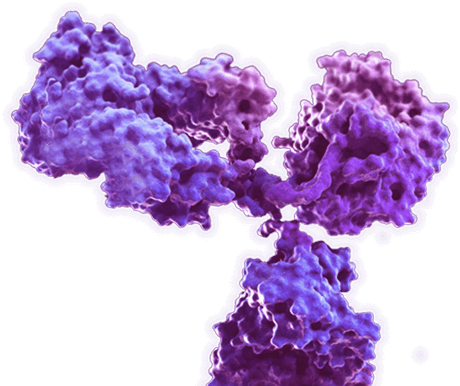Mouse Anti-lck Antibody (CBMOAB-82486FYA)
Cat: CBMOAB-82486FYA
Certificate of Analysis Lookup
To download a Certificate of Analysis, please enter a lot number in the search box below. Note: Certificate of Analysis not available for kit components.
Lot Number
To download a Certificate of Analysis, please enter a lot number in the search box below. Note: Certificate of Analysis not available for kit components.
Lot Number
- Product List
- Specifications
- Application Information
- Target
- Reference
- Relate Reference Data
| Sub Cat | Clonality | Species Reactivity | Application | Clone | Conjugate | Size | |
| CBMOAB-82486FYA | Monoclonal | Zebrafish (Danio rerio), Cattle (Bos taurus), Frog (Xenopus laevis), Medaka (Oryzias latipes), Pig (Sus scrofa), Rhesus (Macaca mulatta), Sheep (Ovis aries) | WB, ELISA | MO82486FYA | 100 µg | ||
| CBMOAB-46800FYA | Monoclonal | Rhesus (Macaca mulatta) | WB, ELISA | MO46800FYA | 100 µg | ||
| MO-AB-14838R | Monoclonal | Cattle (Bos taurus) | WB, ELISA | MO14838R | 100 µg | ||
| MO-AB-00816R | Monoclonal | Medaka (Oryzias latipes) | WB, ELISA | MO00816R | 100 µg | ||
| MO-AB-26957R | Monoclonal | Pig (Sus scrofa) | WB, ELISA | MO26957R | 100 µg | ||
| MO-AB-04799H | Monoclonal | Frog (Xenopus laevis) | WB, ELISA | MO04799C | 100 µg | ||
| MO-AB-15996Y | Monoclonal | Sheep (Ovis aries) | WB, ELISA | MO15996Y | 100 µg |
Specifications
| Host species | Mouse (Mus musculus) |
| Species Reactivity | Zebrafish (Danio rerio), Cattle (Bos taurus), Frog (Xenopus laevis), Medaka (Oryzias latipes), Pig (Sus scrofa), Rhesus (Macaca mulatta), Sheep (Ovis aries) |
| Clone | MO82486FYA |
| Specificity | This antibody binds to Zebrafish lck. |
| Format | Liquid or Lyophilized |
| Storage | Store at 4°C: short-term (1-2weeks) Store at -20°C: long-term and future use |
| Purity | > 90% was determined by SDS-PAGE |
| Purification | Purified with Protein A or G affinity chromatography |
| Cellular Localization | Plasma Membrane |
Application Information
| Application | WB, ELISA |
| Application Notes | ELISA: 1:1000-1:3000 Other applications are to be developed. The optimal dilution should be determined by the end user. |
Target
| Product Overview | Mouse Anti-Zebrafish lck Antibody is a mouse antibody against lck. It can be used for lck detection in Western Blot, Enzyme-Linked Immunosorbent Assay. |
| Alternative Names | Lymphocyte protein tyrosine kinase; lc |
| UniProt ID | Q6TPQ4 |
| Protein Refseq | The length of the protein is 503 amino acids long. The sequence is show below: MGNCGSFDPDDEFSYHPDEWCDQCNCPKPPVSQNFDPLIPYPSQYTPPPSSPLPENLVVAIYKYDPAHSDDLGFEKGEKMKILDCDDPEWYMAESLFTGQRGYIPKNFVAKLNSMETEPWFYKNLSRNDAMRQLLAPGNTQGSFLIRESETQPGSFSISVRDLDPMQGDIIKHYRIRNMDAGGFYITNKISFNSLSELVKHYSREADGLCTRLVKPCQTRAPQKPWWQDEWEVPRESLKLERRLGQGQFGEVWMGLYNNNRQVAIKSLKPGTMSISAFLAEANLMKSLQHPRLVRLFAVVTQEPIYIITEYMENGSLVDFLKTPEGSDIPINTLIDMAAQVAEGMAYVEQKNYIHRDLRAANILVSHELTCKIADFGLARLIKNNEYTAREGAKFPIKWTAPEAINYGTFSIKSDVWSFGVLLTEIVTYGRIPYPGMTNPEVIANLERGYRMPCPDNCPEALYNVMKHCWTENPDNRPTFEFLRSVLEDFFTATEGQYQEQPC. |
Reference
| Reference | 1. Dee, C. T., Nagaraju, R. T., Athanasiadis, E. I., Gray, C., Fernandez del Ama, L., Johnston, S. A., ... & Hurlstone, A. F. (2016). CD4-transgenic zebrafish reveal tissue-resident Th2-and regulatory T cell-like populations and diverse mononuclear phagocytes. The Journal of Immunology, 197(9), 3520-3530. 2. Burroughs-Garcia, J., Hasan, A., Park, G., Borga, C., & Frazer, J. K. (2019). Isolating malignant and non-malignant B cells from lck: egfp zebrafish. JoVE (Journal of Visualized Experiments), (144), e59191. |
Relate Reference Data

Figure 1 Generation of a cd4-1 reporter line. High magnification view of the thymus at 5 dpf revealing CD4-1+ (mCherry+ GFP+) and CD4-1− (GFP+ only) T cells.

For Research Use Only | Not For Clinical Use.
Online Inquiry

